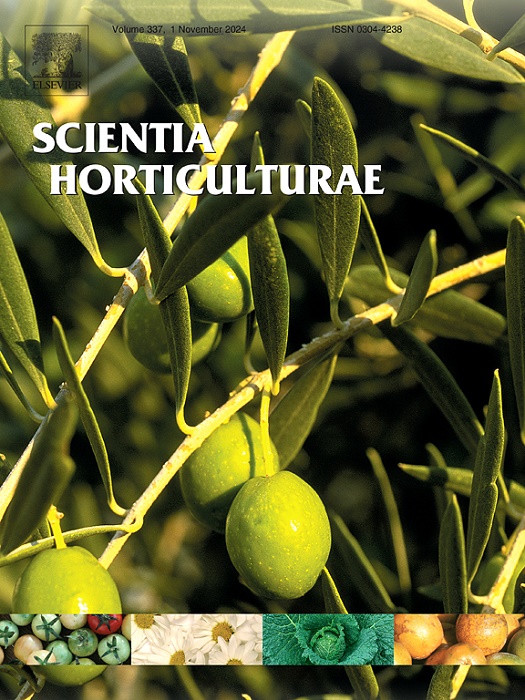Genome-wide characterization of the ankyrin repeats gene family in response to cold stress in Prunus mume
IF 3.9
2区 农林科学
Q1 HORTICULTURE
引用次数: 0
Abstract
The escalating environmental impact of global climate change is increasingly challenging the cultivation of ornamental plants. Ankyrin (ANK) repeat proteins not only regulate plant growth and development, but also respond to various abiotic stresses. Mei (Prunus mume), a woody plant of ornamental and economic value, is particularly vulnerable to stressors, such as low temperatures and drought. To study the genomic mechanisms of stress adaptation for mei, we conducted a comprehensive genome-wide characterization of the ANK gene family in its cultivated and wild varieties. We identified 139 PmANK and 132 PmvANK genes in P. mume and P. mume var. Tortuosa genomes, respectively. These genes were classified into 9 distinct subfamilies based on their functional domains. Phylogenetic analysis revealed 8 branches within the ANK protein family, with members of each subfamily clustered together. The exon-intron structures and motifs of ANK genes were highly conserved across both P. mume and P. mume var. Tortuosa genomes. Analysis of the promoter regions of ANK genes revealed a plethora of regulatory elements responsive to light, hormones, various stresses, and growth and development. Segmental duplication analysis identified 7 gene pairs in P. mume and 14 in P. mume var. Tortuosa. Investigation into the spatial-temporal expression patterns of PmANKs across different tissues and developmental stages demonstrated specific responses to environmental cues. Notably, PmANK1/83/100 showed significant upregulation under cold stress conditions. Phenotypic and physiological assessments of transgenic plants subjected to low temperatures indicated that PmANK1/83/100 enhance cold tolerance. Furthermore, we constructed an interaction network involving these three genes and identified their interactions with cold resistance-related genes in P. mume. Our findings could potentially enhance our understanding of the intricate regulatory mechanisms governing cold stress responses in mei.
求助全文
约1分钟内获得全文
求助全文
来源期刊

Scientia Horticulturae
农林科学-园艺
CiteScore
8.60
自引率
4.70%
发文量
796
审稿时长
47 days
期刊介绍:
Scientia Horticulturae is an international journal publishing research related to horticultural crops. Articles in the journal deal with open or protected production of vegetables, fruits, edible fungi and ornamentals under temperate, subtropical and tropical conditions. Papers in related areas (biochemistry, micropropagation, soil science, plant breeding, plant physiology, phytopathology, etc.) are considered, if they contain information of direct significance to horticulture. Papers on the technical aspects of horticulture (engineering, crop processing, storage, transport etc.) are accepted for publication only if they relate directly to the living product. In the case of plantation crops, those yielding a product that may be used fresh (e.g. tropical vegetables, citrus, bananas, and other fruits) will be considered, while those papers describing the processing of the product (e.g. rubber, tobacco, and quinine) will not. The scope of the journal includes all horticultural crops but does not include speciality crops such as, medicinal crops or forestry crops, such as bamboo. Basic molecular studies without any direct application in horticulture will not be considered for this journal.
 求助内容:
求助内容: 应助结果提醒方式:
应助结果提醒方式:


